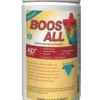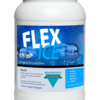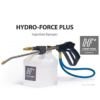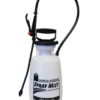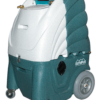Carpet, Technical Resources
Berber Carpet
Berber Carpet
Introduction
Berber carpets have fiber tufts designed in a loop manner rather than a cut pile. The loops of a berber are large and bulky, versus the short tight loops of standard commercial carpet. Commercial quality carpet is often of the level-loop configuration with high density but low pile. Multi-level loop pile is a looped pile of varying heights,(also known as “high-low” pile) Berbers have become increasingly popular but have become inherent problems that if not addressed, can create problems in the cleaning process, (see helpful hints and cautions on last page)
Procedure
Step 1
Use the burn test to properly identify the fiber. Berber can be made of synthetic or wool fibers. If testing shows it to be wool or nylon, refer to wool carpet cleaning section. If it is a synthetic fiber other than nylon, follow the directions below.
Step 2
Thoroughly vacuum the carpet to remove as much dry soil as possible to ensure the most efficient cleaning possible. Berber’s loop pile holds onto and hides soil
Step 3
Determine which spots may need extra attention and remove them prior to cleaning, using a spotting kit. Refer to spotting brochures for specific spots and stains.
Step 4
Pre-condition the berber carpet with DOMINATOR and agitate with a Grandi-Groomer or brush. DOMINATOR is a powerful prespray that will cut through the toughest soils and oils to shorten the dwell time. Adding CITRUS SOLV to your prespray will give a tremendous cleaning boost and offer a powerful pairing agent to help with deodorization. BOOST ALL is another excellent prespray additive. This will enhance color, and brighten dull dingy traffic areas that are especially common on olefin berbers.
Step 5
Extract the carpet with GOLD LX , a mild but powerful emulsifier that will aid in cleaning and is suitable for any synthetic fiber. You may elect to extract with POWER RINSE to eliminate potential wicking problems that can occur, especially in glue down situations.
Step 6
Spray a light mist of POWER RINSE after cleaning (if you did not extract with it already). This will neutralize any remaining alkaline residue that may be left behind after cleaning and will also aid in drying.
Step 7
Groom or set the pile where needed. It is important to groom the carpet so you do not leave permanent jet streaks or wand marks after cleaning. This will leave a nice finished look and will promote drying.
Step 8
Take all steps necessary to dry the carpet quickly. This would include using ceiling fans, opening windows, or preferably the use of an AIR MOVER.
Products Needed- Synthetic
Products Needed – Wool
Equipment Needed
HELPFUL HINTS – Loop pile can hold more moisture than cut pile in some instances. DO NOT be in a hurry. Perform proper cleaning and dry passes with a wand. Overlap frequently to avoid possible streaking and DO NOT allow chemicals to puddle.
CAUTION – Watch for loose seams and fibers. Use caution with cleaning tools where these may be present as the loose fibers can unravel and cause a significant problem. Watch for hoses and HOT quick connects on olefin berbers as they can be damaged due to a low melting point.
OVERVIEW

Procedure:
- Identify fiber using burn test.
- Pre-vacuum carpet
- Pre-spot difficult spots using a spotting kit
- Pre-spray with Dominator boosted with Citrus Solv and Boost All.
- Extract with Gold LX or Power Rinse
- Groom carpet where needed
- Quick dry with air movers.




